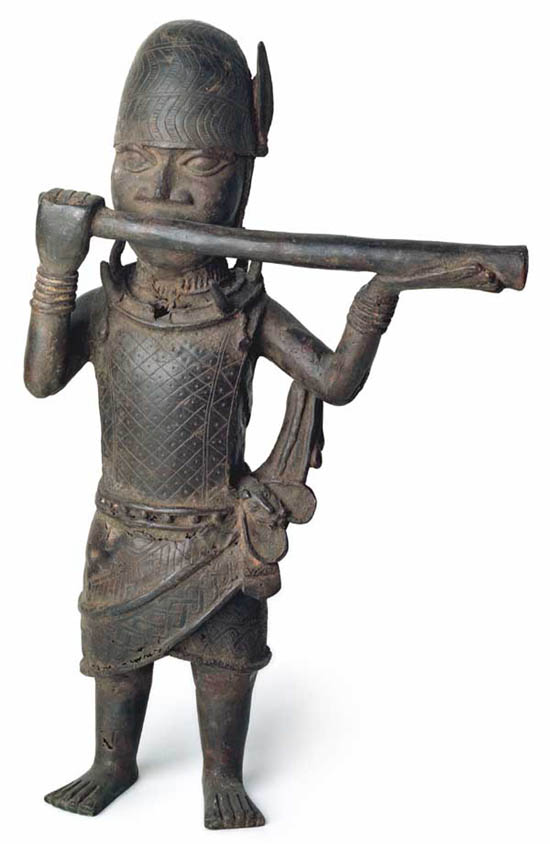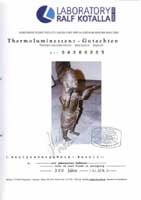Galerie Peter Herrmann |
- | Ancient Art from Africa |
||
 |
| Hornblower | Thermoluminescence - Expertise |
| Benin, Nigeria 17th/18th century Bronze 51 cm |
 |
| Musician with Transverse Horn |
The clothing worn by this horn player is reminiscent of a very common type already described by Luschan. The figure wears an ornate wrap-around skirt and a poncho that leaves the sides of his torso exposed, held in place with a belt adorned with an animal mask. In typical fashion, the waistcloth is decorated with a stiff, pointed appendage, while the horn is remarkably straight and held in abnormally long hands. In the Viennese Catalogue (which contains an extensive description of a similar figure), Barbara Blackmun describes the helmet as a "beehive-like cap" adorned with upright feathers "in which a pattern of wavy lines is engraved". Around his neck, the figure wears a leopard-claw necklace. In the literature, this figure is usually seen as a court official whose job it was to herald the arrival of the Oba's royal entourage with the blow of his horn during public processions. Because the figure is often depicted on plaques alongside warriors, it can also be assumed that he had certain military obligations. Barbara Blackmun suggests that he and other musicians may have accompanied military campaigns. And yet here, the hornblower wears luxurious clothing and is therefore more likely dressed for a specific festival or celebration than for a war. Cp.: |
| Similar objects : | Illustration: |
| Staatliche Museen zu Berlin, Ethnologisches Museum | Felix von LUSCHAN: Die Altertümer von Benin, Band 1-3, Berlin 1919, Tafel 72. |
| British Museum, London | William B. FAGG: Bildwerke aus Nigeria, München 1963, S. 59. |
| The Trustees of the National Museums Scotland, Edinburgh | Barbara PLANKENSTEINER (Hg.): Benin. Könige und Rituale. Höfische Kunst aus Nigeria, Wien 2007, S. 315. |